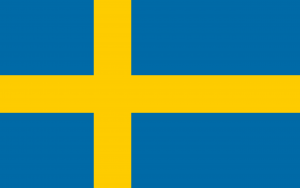Difference between revisions of "Language/Swedish/Vocabulary/How-to-express-ownership"
m (Quick edit) |
|||
| Line 19: | Line 19: | ||
# ''Det är Måns nyckel.'' "It's Måns' key." | # ''Det är Måns nyckel.'' "It's Måns' key." | ||
# ''Det är Lars skrivbord.'' "It's Lars' desk." | # ''Det är Lars skrivbord.'' "It's Lars' desk." | ||
==Related Lessons== | |||
* [[Language/Swedish/Vocabulary/Weather|Weather]] | |||
* [[Language/Swedish/Vocabulary/How-to-talk-about-location-with-här,-där,-and-där-borta|How to talk about location with här, där, and där borta]] | |||
* [[Language/Swedish/Vocabulary/Problems-in-Swedish|Problems in Swedish]] | |||
* [[Language/Swedish/Vocabulary/Seasons|Seasons]] | |||
* [[Language/Swedish/Vocabulary/Time|Time]] | |||
* [[Language/Swedish/Vocabulary/Dinner-Table|Dinner Table]] | |||
* [[Language/Swedish/Vocabulary/Animals|Animals]] | |||
* [[Language/Swedish/Vocabulary/Family|Family]] | |||
* [[Language/Swedish/Vocabulary/At-Home|At Home]] | |||
* [[Language/Swedish/Vocabulary/Computer|Computer]] | |||
* [[Language/Swedish/Vocabulary/Count-from-1-to-10|Count from 1 to 10]] | |||
* [[Language/Swedish/Vocabulary/Count-to-10|Count to 10]] | |||
* [[Language/Swedish/Vocabulary/How-to-keep-a-conversation-going|How to keep a conversation going]] | |||
* [[Language/Swedish/Vocabulary/How-to-talk-about-a-person's-appearance-or-personality|How to talk about a person's appearance or personality]] | |||
Revision as of 13:11, 26 February 2023
The purpose of this lesson is to learn how to express ownership by using genitive nouns in Swedish. Genitive is a form of a noun that denotes a person or a thing that possesses something. Forming genitive nouns in Swedish is very straightforward; you simply add an -s to the end of a noun. Let's look at some examples from this lesson's dialogue:
- Kan jag låna pappas cykel då? "Can I borrow Dad's bike then?"
- Jag lovar att du får låna din mormors cykel. "I promise that you'll be able to borrow your grandmother's bike."
Now we'll learn how to form simple sentences where we express ownership by using genitives. We'll use the following sentence structure: Det är [noun +s] + [name of object] ("It's [name's] [object]"). Let's illustrate this with the names Anna and Kerstin and the nouns mormor ("grandmother") and morfar ("grandfather").
For example:
- Det är Annas cykel. "It's Anna's bike."
- Det är Kerstins cykel."It's Kerstin's bike."
- Det är mormors cykel."It's grandmother's bike."
- Det är morfars cykel. "It's grandfather's bike."
There's one important exception when it comes to forming genitive nouns in Swedish that might be good to be aware of. If the genitive is the name of a person, and that name ends in an -s, then the additional -s is not added. This was, for example, the case when Kerstin, in this lesson's dialog, told du inte låna Jens cykel? ("Can't you borrow Jens' bike?"). Let's further illustrate this by using the names Hans, Anders, Måns, and Lars--all names that end in -s.
For example:
- Det är Hans bok."It's Hans' book."
- Det är Anders penskrin. "It's Anders' penbox."
- Det är Måns nyckel. "It's Måns' key."
- Det är Lars skrivbord. "It's Lars' desk."
